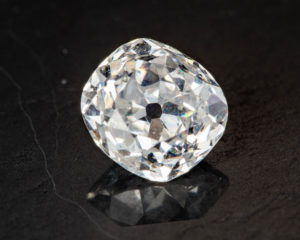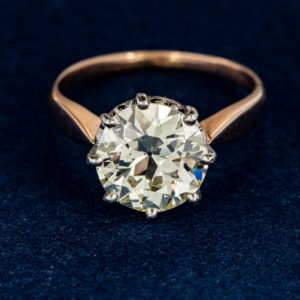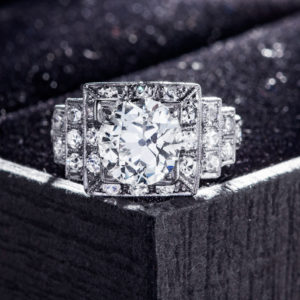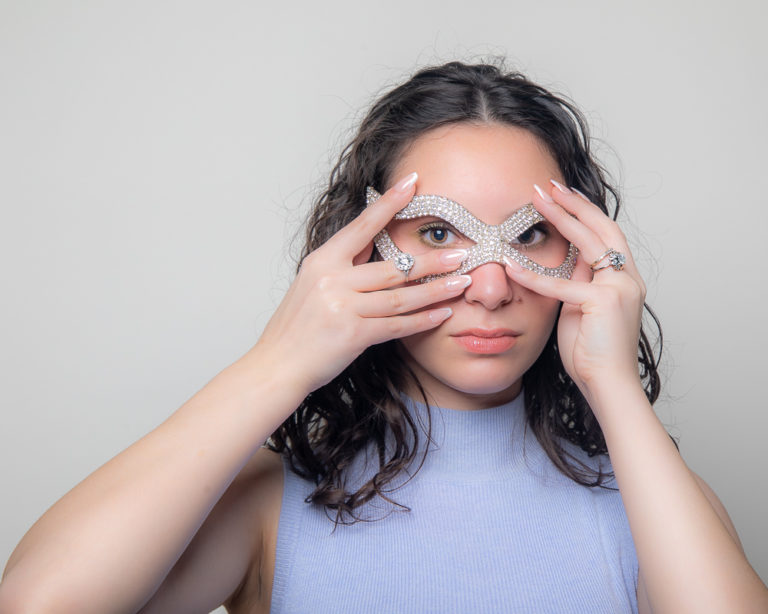Vintage is hot! Everyone wants gorgeous, unique, and interesting vintage jewelry. In fact, prices have soared! What are the markers of a true vintage stone though? How can you tell the difference between modern and vintage?
Unlike modern Round Brilliant Diamonds, old Diamonds are not typically white in color. Most of the white stones on the market today come from Southern Africa – Angola, Botswana, Sierra Leone – mines that did not exist 100 or 200 years ago. Older stones came from mines in Brazil and Venezuela which produced yellower looking Diamonds.
Old stones, however, tend to face whiter than modern cuts. When looking at the top of the stone the older Diamond will appear one to two color grades whiter. This is because of the open culet at the bottom of the stone which allows for more light to enter and reflect in the Diamond.
There are two main categories of vintage Diamonds, Old Mine Cuts and Old European Cuts.
Old Mine Cut Diamonds
Old Mine Cuts, or Old Miners, were produced through the late 1800s. These Diamonds were cut without the advantage of motorized machinery and tended to follow the rough Diamond’s octahedral shape. This created mostly square or rectangular cushion-shaped Diamonds. The shapes of the old stone were not uniform at all, although they had the same number of facets, 58, as the modern Round Brilliant.
 Old Mine Cut Diamond
Old Mine Cut Diamond
Key Characteristics: 1. Old Miners look squarer 2. Heavy crown 3. Very large open culet 4. Very deep bottom 5. Small table 6. Heavy, clunky look, with non-uniform facets
Old European Cut Diamonds
Old European Cuts, or Old Euros, arose in the 1900’s with the advent of motorized machinery. This produced a more evenly cut diamond. The main the difference between the cuts can be seen on the back facets. On an Old Euro the back facets radiate out from a large culet pretty much evenly, whereas Old Miners have rays and kite facets coming off the culet. The old Euro bridged the roundish Old Miner with today’s modern Round Diamonds.
 Old European Cut Diamond
Old European Cut Diamond
Key Characteristics: 1. Round look 2. Open culet, but smaller than in Old Miners 3. Very small table 4. More even facets on the pavilion 5. Bottom half is short
Prices for Vintage Jewelry
Prices for Vintage Jewelry have soared 80% over the past 10 years, Rapaport News reports (as of 2017). In fact, many people in possession of such jewelry have no idea of the true value of their items, according to the website, which cites a new report from Bonhams auction house in the United Kingdom.
Pieces that have climbed the most in value include those from the Belle Epoque era, which lasted from 1890 to 1915. Art Deco jewelry has also increased steeply in value.
 An Example of a True Vintage Art Deco Ring
An Example of a True Vintage Art Deco Ring
Prices get a boost when the item carries the mark of a famous brand such as Cartier. And sometimes those marks are hard to spot on older jewelry. Emily Barber, department director of Bonhams London, was quoted saying: “To find an original, intact, surviving jewel from a particular period in history, with the added bonus that it was made by a master jeweler, makes it an incredibly rare and valuable work of art.”
Here at The Chicago Jewelry Buyers, we love Vintage Jewelry! We love discovering cool pieces that have a story. We find that Art Deco pieces do really well for us on the wholesale market end of our business. Have some Vintage jewelry laying around not getting any use? Come and sell it to us! We would love to take a look!



